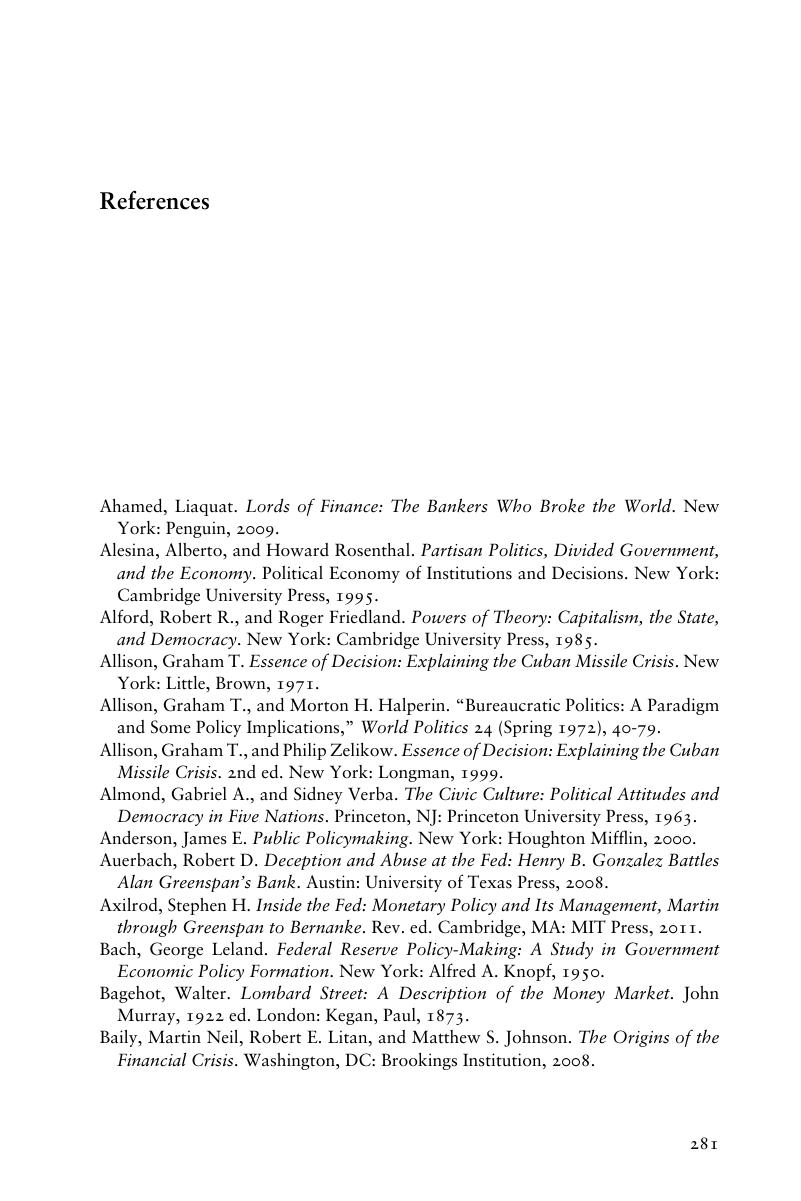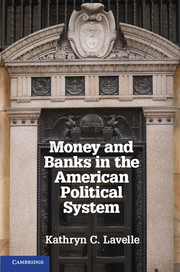Book contents
- Frontmatter
- Contents
- Figures and Tables
- Preface
- Acknowledgments
- Abbreviations
- 1 The Institutional Foundations of Financial Politics in the United States
- Section 1 A Historical Background
- Section 2 Bureaucratic Politics and Finance
- Section 3 The Operation of the Financial Political Economy
- Section 4 Conclusions
- Glossary
- References
- Index
- References
References
Published online by Cambridge University Press: 05 January 2013
- Frontmatter
- Contents
- Figures and Tables
- Preface
- Acknowledgments
- Abbreviations
- 1 The Institutional Foundations of Financial Politics in the United States
- Section 1 A Historical Background
- Section 2 Bureaucratic Politics and Finance
- Section 3 The Operation of the Financial Political Economy
- Section 4 Conclusions
- Glossary
- References
- Index
- References
Summary

- Type
- Chapter
- Information
- Money and Banks in the American Political System , pp. 281 - 292Publisher: Cambridge University PressPrint publication year: 2013



